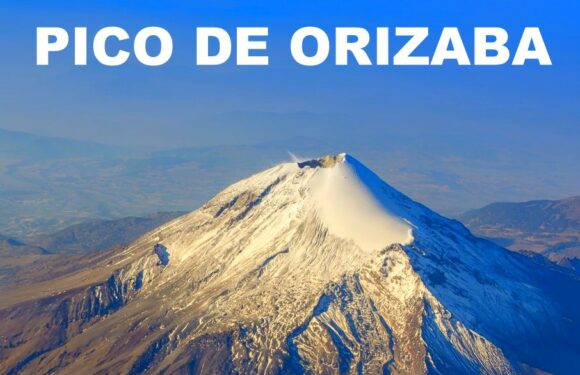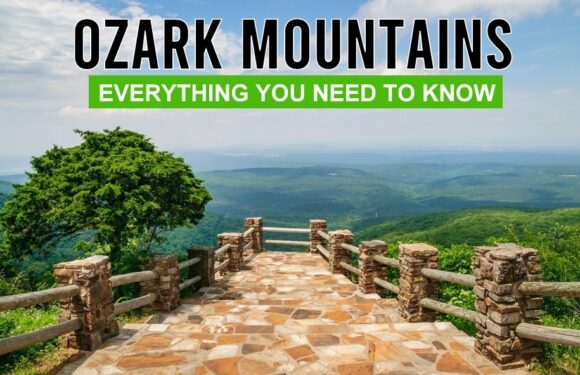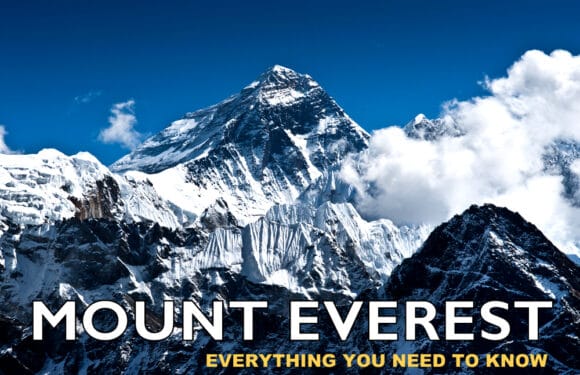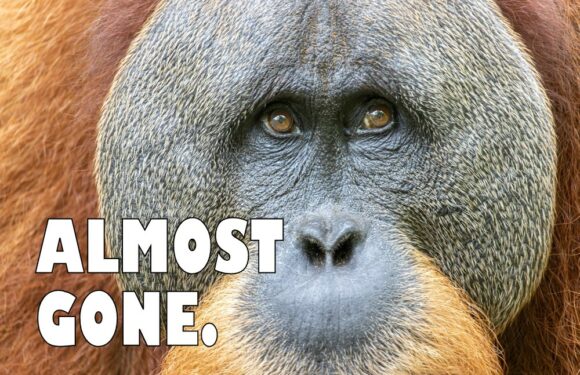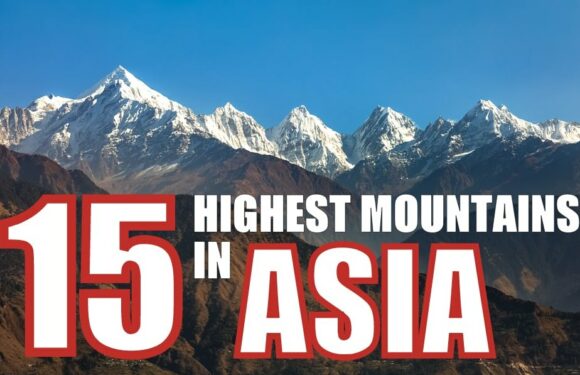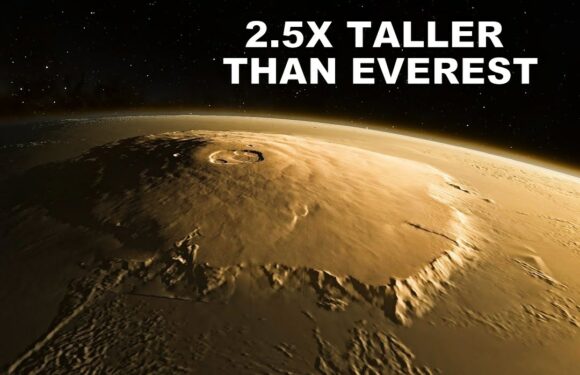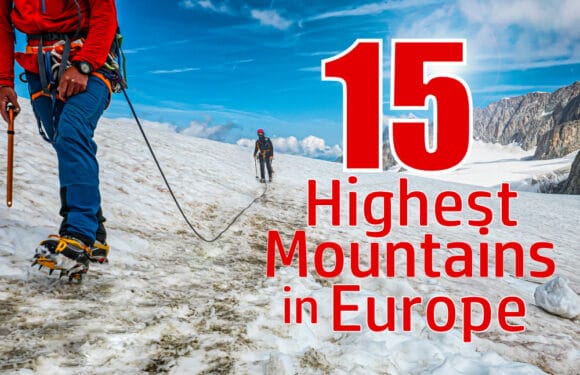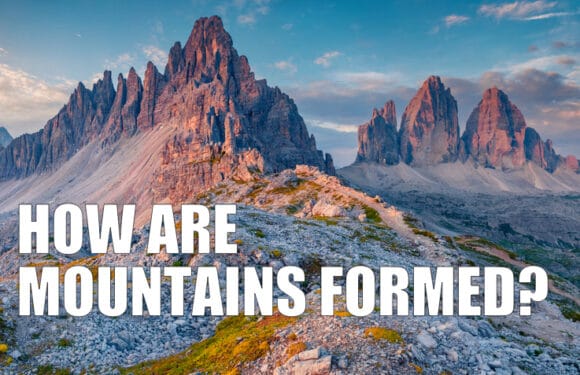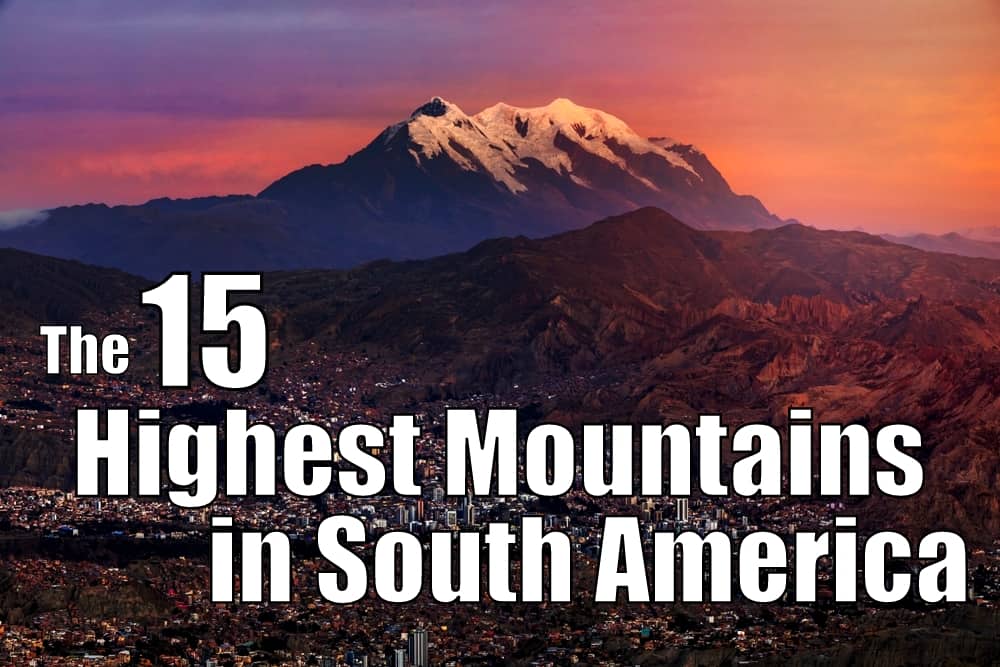
South America is home to some of the highest mountains on Earth. Its varied topography is highlighted by numerous peaks, each with its own characteristics and beauty.
Here are the 15 highest mountains in South America.
What are the Tallest Mountains in South America?
1. Aconcagua (22,841 feet / 6,961 meters)
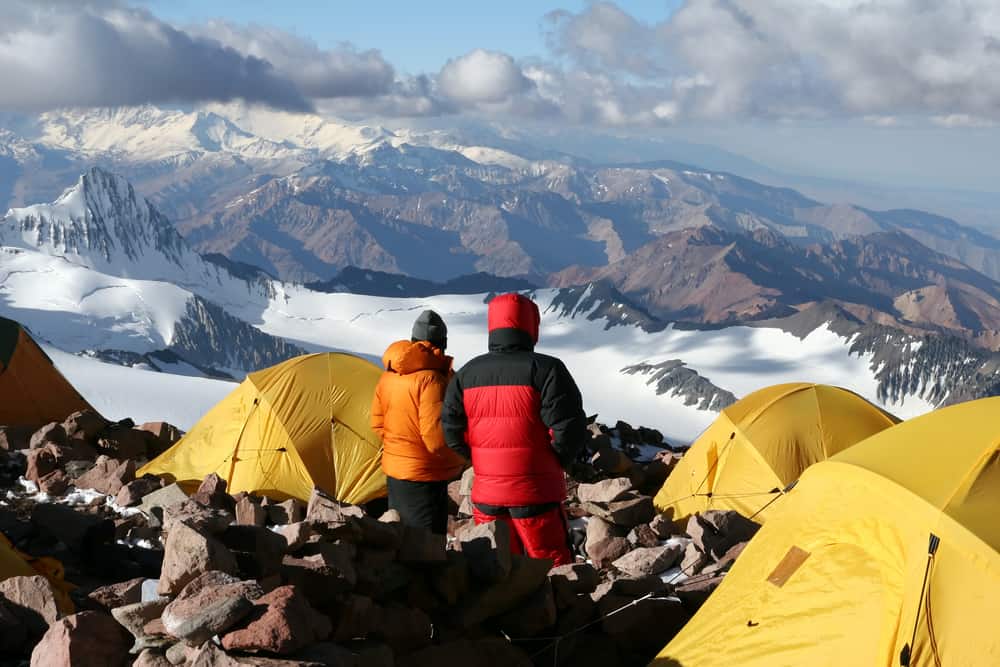
Aconcagua is the highest mountain in South America and the entire Western Hemisphere. It dominates the Andes in Argentina. Despite its significant altitude, it’s a non-technical climb like Mount Kilimanjaro in Tanzania, making it a magnet for climbers aiming to conquer one of the Seven Summits. The name “Aconcagua” derives from the Quechua language, possibly meaning “stone sentinel.”
2. Ojos del Salado (22,615 feet / 6,893 meters)
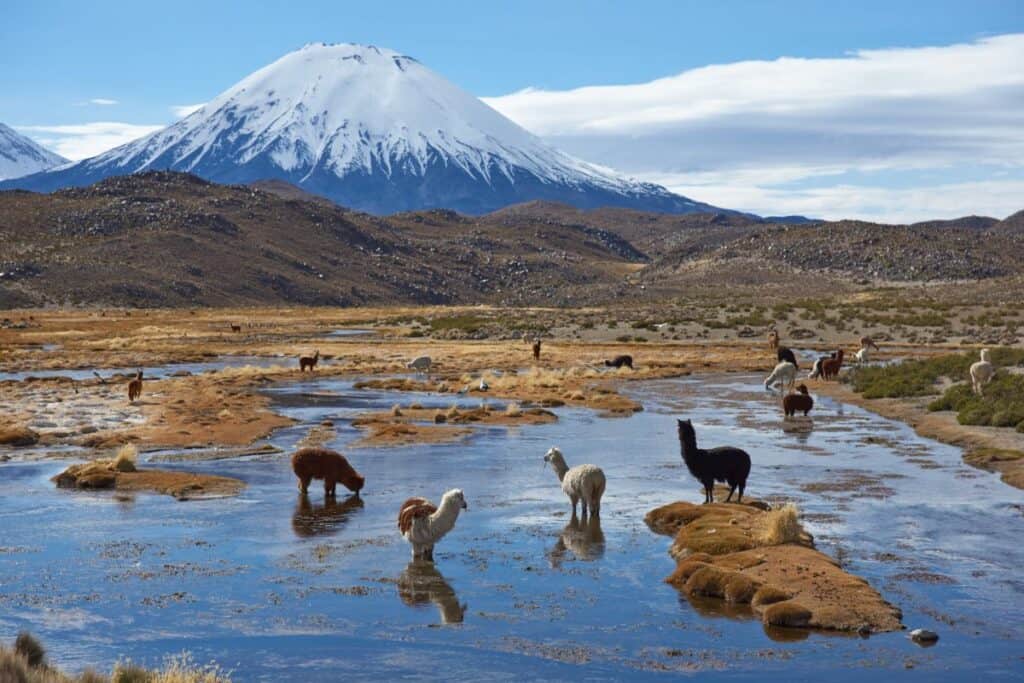
Ojos del Salado is the second highest mountain in South America and the world’s highest volcano. It is part of the Andres range and sits on the Chilean-Argentine border. The mountain is home to the highest crater lake on Earth at an elevation of 21,260 feet. Its name means “Eyes of the Salty One,” referring to its numerous high altitude lakes.
3. Monte Pissis (22,287 feet / 6,795 meters)
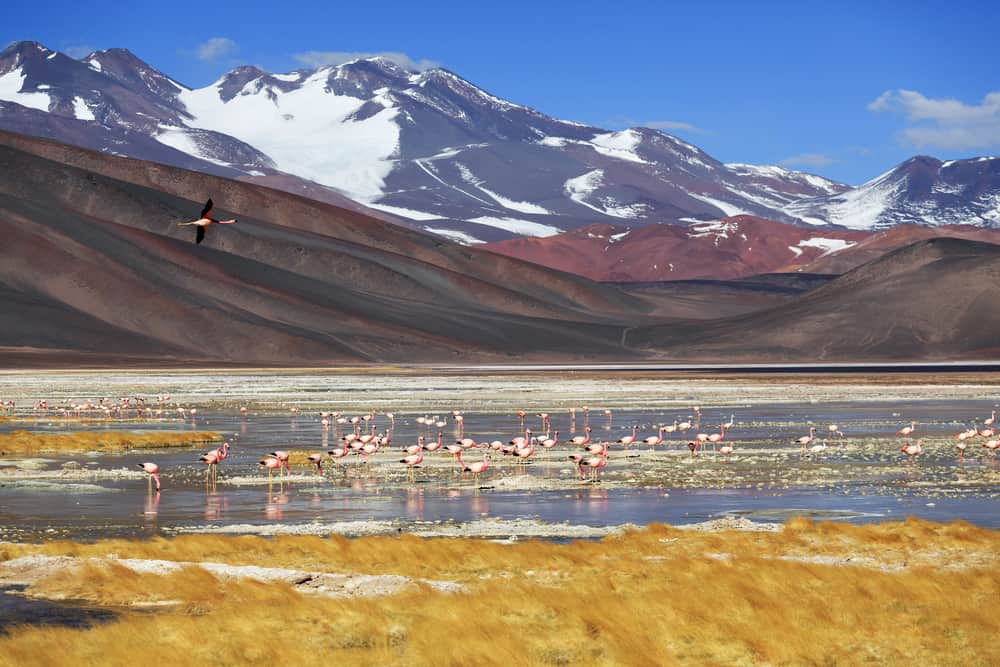
Located in Argentina, Monte Pissis ranks third in the continent’s tallest mountains. It is an active volcano and part of the Central Volcanic Zone of the Andes. Despite its considerable altitude, Monte Pissis remains less explored compared to its neighboring peaks. It was named after Pedro José Amadeo Pissis, a French geographer.
4. Huascarán (22,205 feet / 6,768 meters)
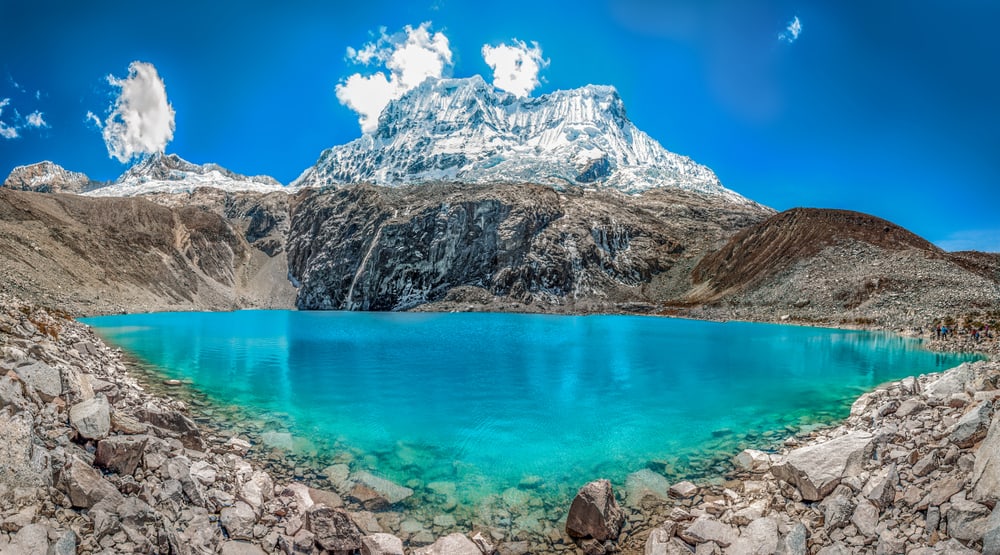
Part of Peru’s Cordillera Blanca range, Huascarán is the highest peak in Peru and the highest tropical mountain in the world. UNESCO designated the Huascarán National Park as a World Heritage Site due to its biodiversity and glacial landscapes. The peak was named after a 16th-century Inca ruler.
5. Cerro Bonete (22,175 feet / 6,759 meters)
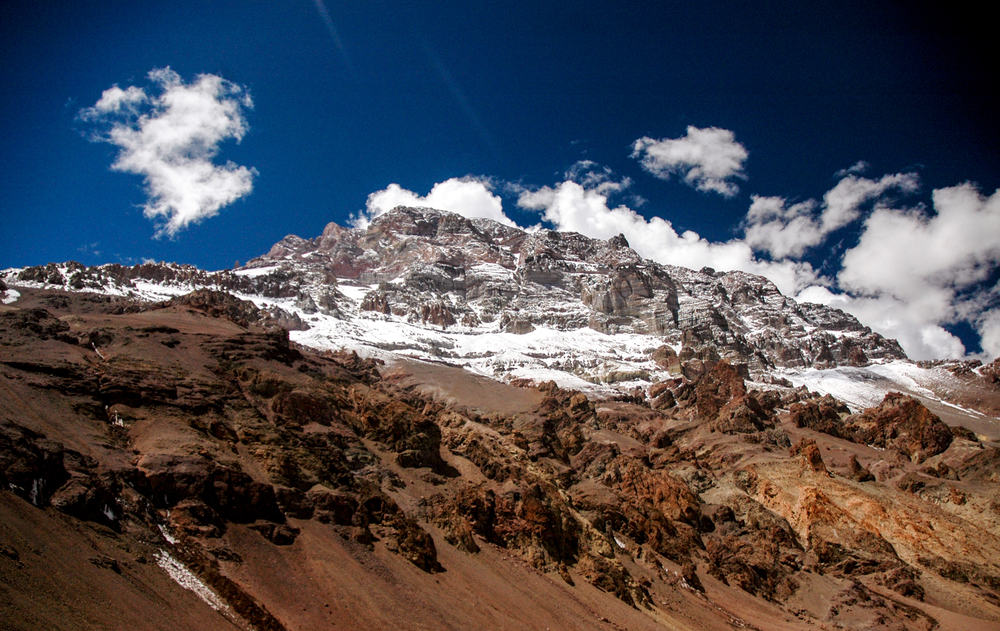
Cerro Bonete, located in Argentina, is part of the Central Andes. The mountain’s pyramid-like shape and jagged ridges present a steep, technical climb for those seeking to bag this peak. The name “Cerro Bonete” translates to “Hat Mountain” in Spanish, a name derived from its distinctively shaped summit resembling a hat or bonnet.
6. Nevado Tres Cruces (22,142 feet / 6,749 meters)
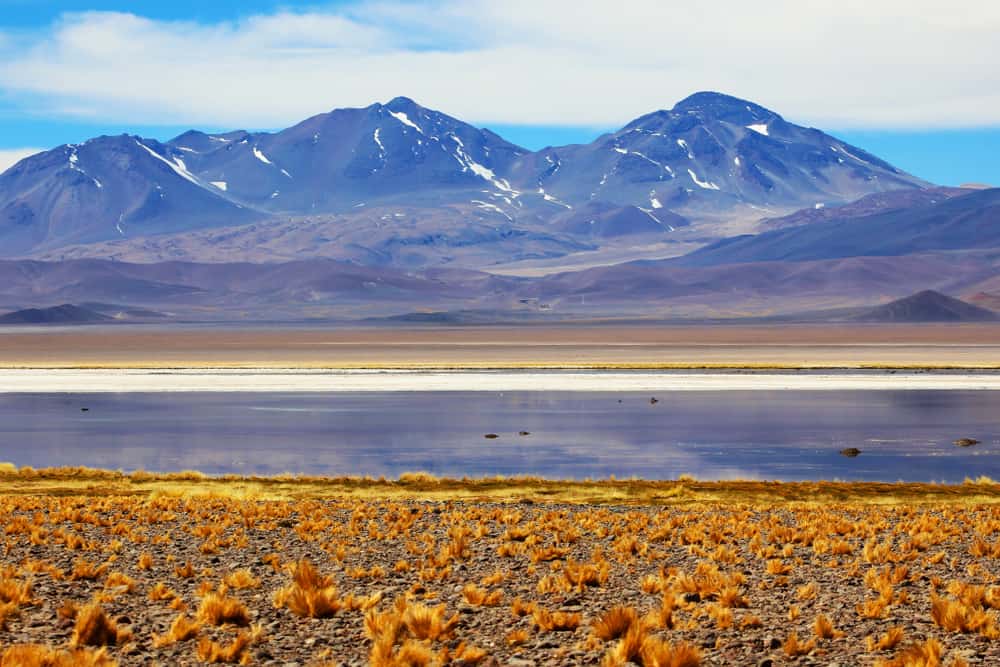
Nevado Tres Cruces is a huge mountain massif in Chile’s Atacama Region, within the Andes Mountains. Its name, which translates to “Three Crosses,” refers to its three summits. It has two main summits, Tres Cruces Sur and Tres Cruces Centro, and a third minor summit.
7. Llullaillaco (22,109 feet / 6,739 meters)
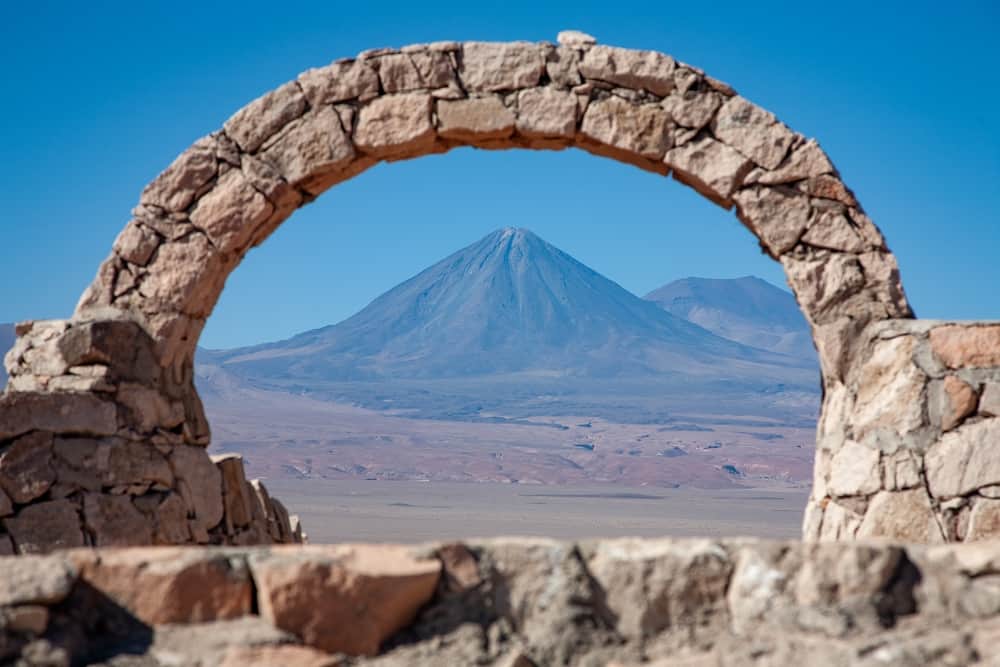
Located on the border between Chile and Argentina, Llullaillaco is an active volcano with a history dating back to the Inca civilization. The mountain holds a place of historical significance as the highest archaeological site in the world. The “Children of Llullaillaco” are three well-preserved Inca child mummies that were discovered here.
8. Cerro Mercedario (22,047 feet / 6,720 meters)
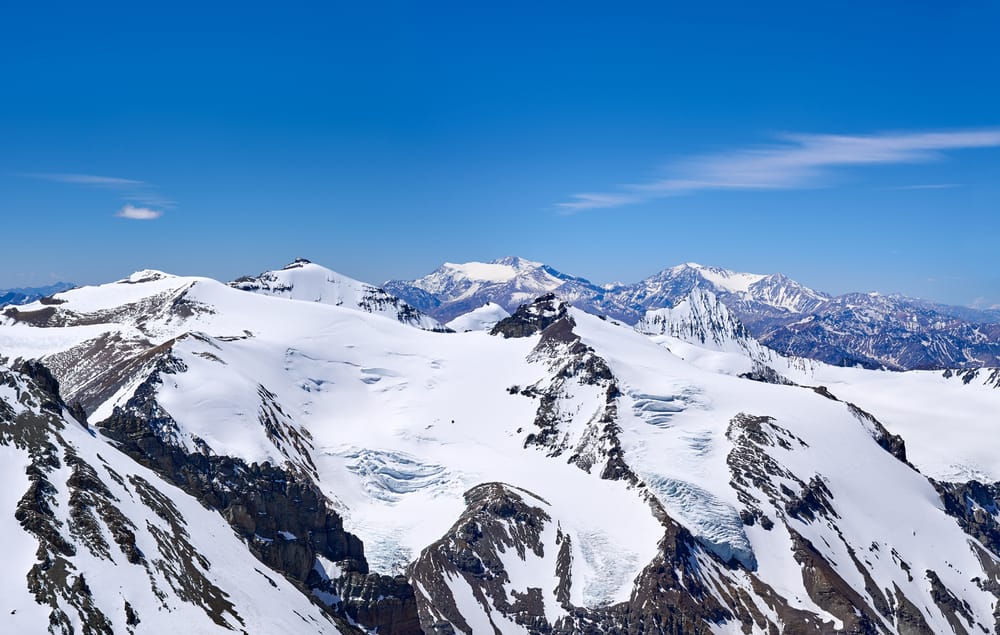
Cerro Mercedario, located in Argentina, is the highest peak in the Cordillera de la Ramada range. It is only 60 miles north of Aconcagua. The name “Mercedario” originates from the Mercedarian Order, a Catholic religious order known for its charitable work and missionary efforts.
9. Incahuasi (21,722 feet / 6,621 meters)
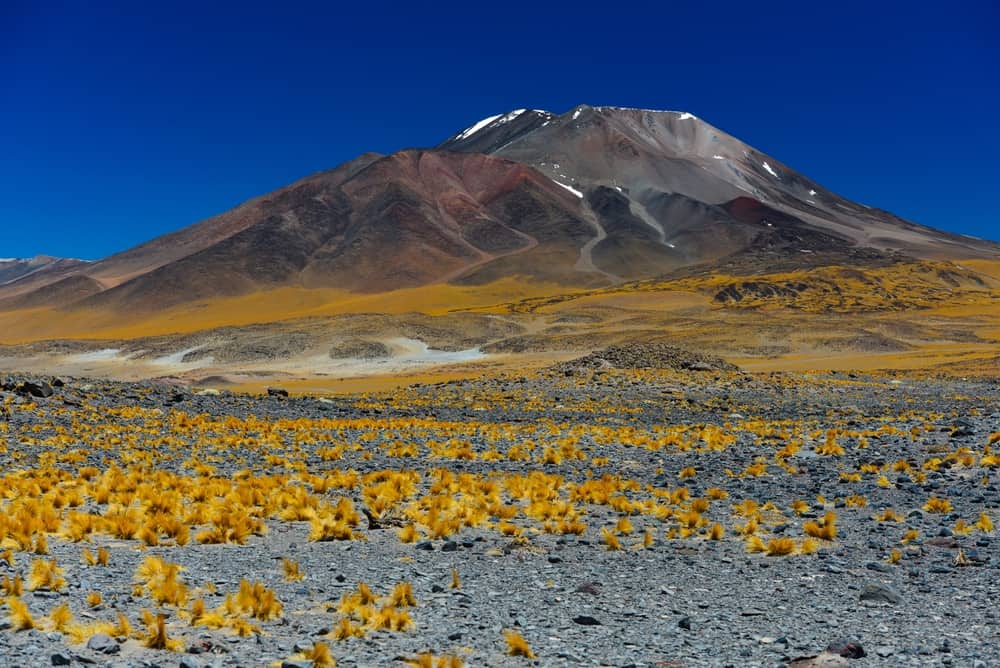
Incahuasi is a volcano that lies on the border between Argentina and Chile. It is part of the Central Volcanic Zone of the Andes. The peak is known for its many archeological sites. It housed the world’s second highest ruins, an Incan temple, near the summit. Fittingly, the mountain’s name means “Inca house” in Quechua.
10. Yerupajá (21,709 feet / 6,617 meters)
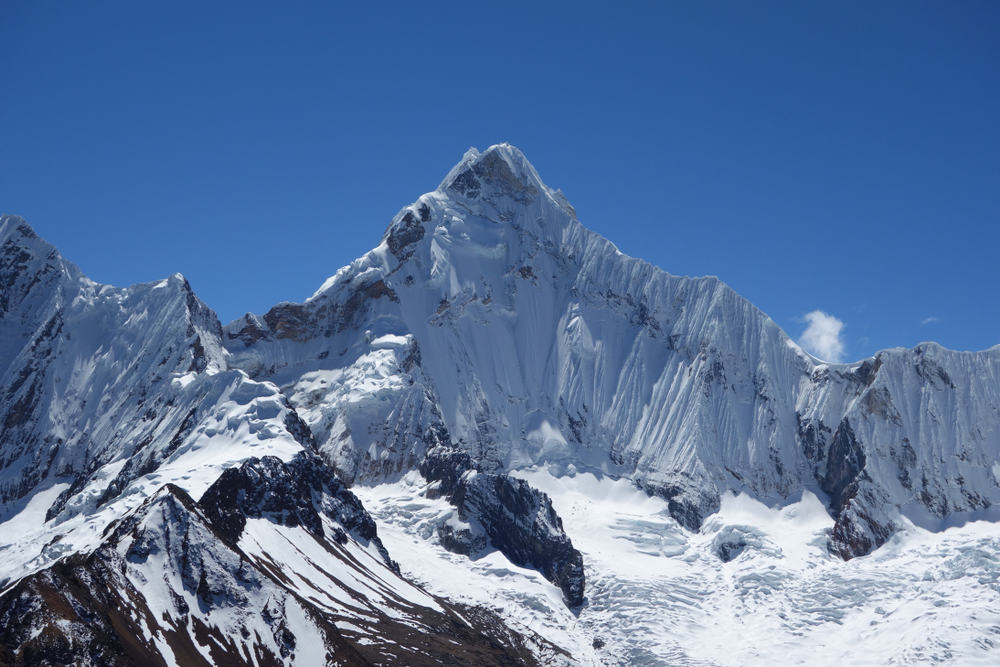
Yerupajá is located in the Cordillera Huayhuash range of the Peruvian Andes. It is known for its distinctive double summit, eastern and western. Yerupajá is surrounded by glaciers, including the Yerupajá Glacier and Siula Grande Glacier. Its name refers to a revered spirit or deity in the Quechua language.
11. Nevado Sajama (21,463 feet / 6,542 meters)
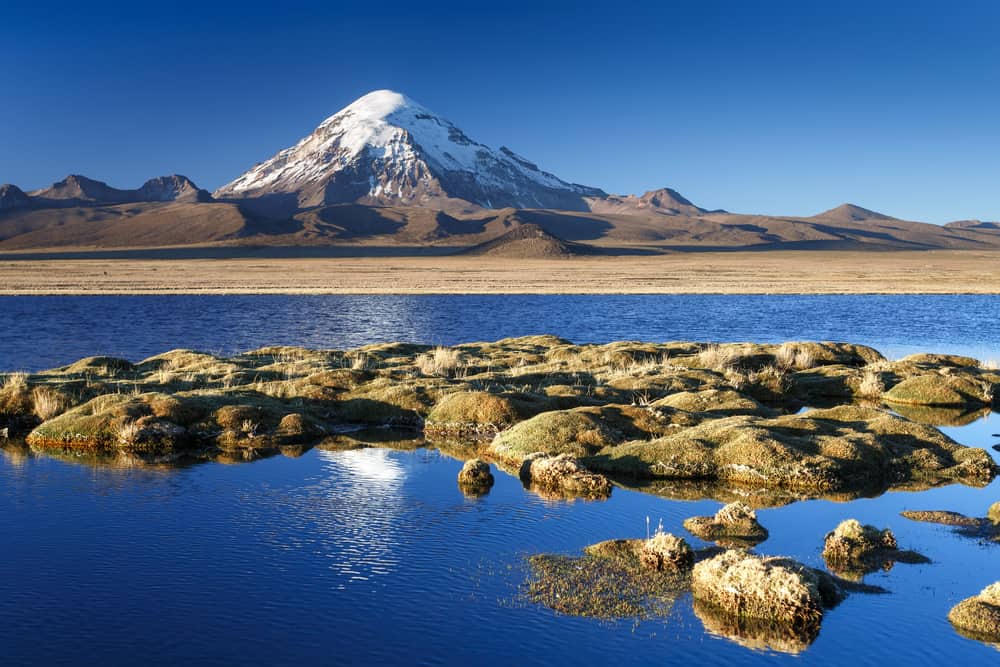
Nevado Sajama is the highest peak in Bolivia. It is part of the Cordillera Occidental of the Andes mountain range. The mountain boasts rich biodiversity in its surrounding areas, Sajama National Park. The name “Sajama” originates from the indigenous Aymara language. It refers to a type of cactus found in the region.
12. El Muerto (21,286 feet / 6,488 meters)
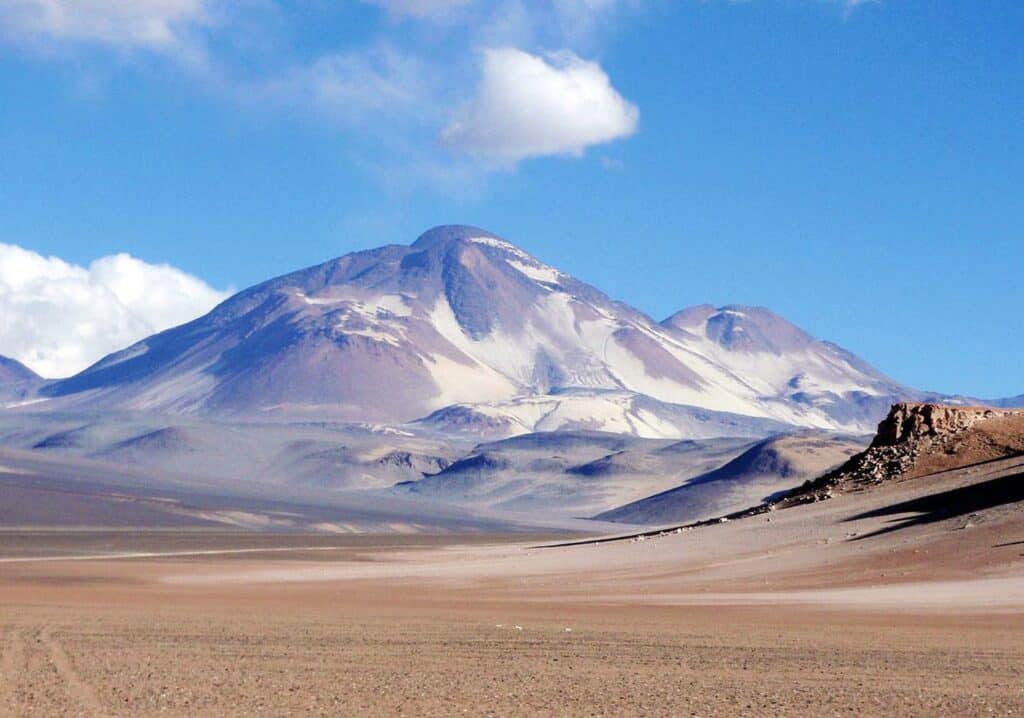
El Muerto is a stratovolcano in the Andes Mountains, located on the border between Argentina and Chile. This peak doesn’t get many visitors given that Ojos del Salado, South America’s second highest peak and world’s highest volcano, is next door. Its name means “The Dead One” in Spanish.
13. Nevado Illimani (21,122 feet / 6,438 meters)
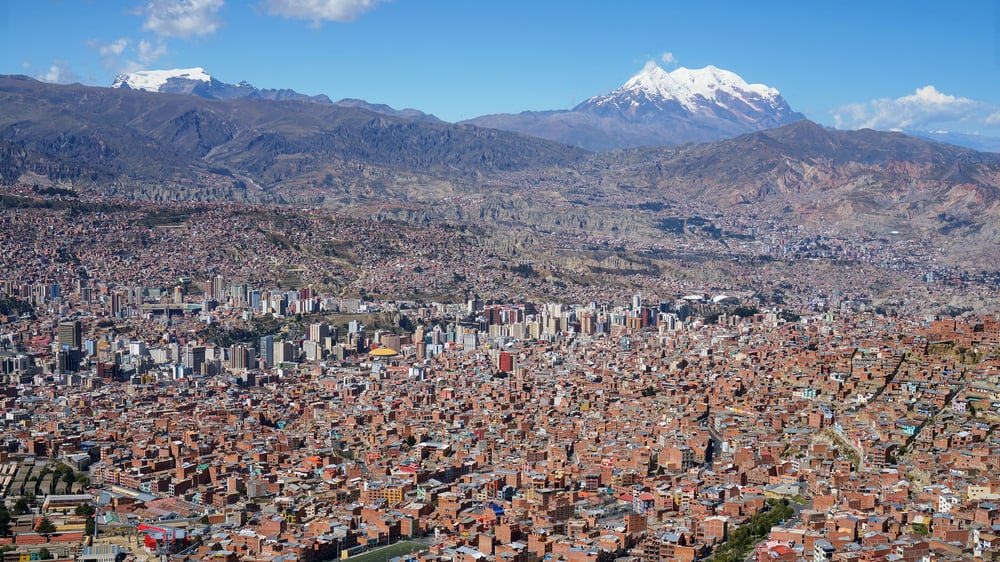
Nevado Illimani is located in Bolivia’s Cordillera Real. The mountain stands as an unmistakable backdrop to the city of La Paz. Its distinctive multiple peaks offer varying challenges for climbers.From the Aymara language, “Illimani” possibly means “Golden Eagle.”
14. Coropuna (21,079 feet / 6,425 meters)
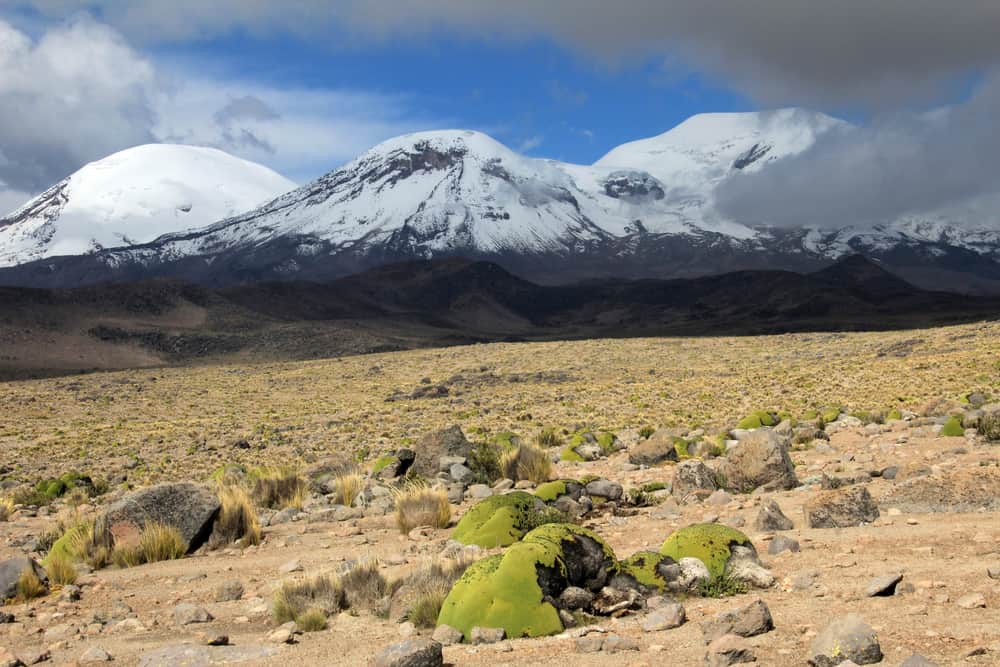
Coropuna is the largest and highest volcano in Peru. It is part of the volcanic chain that stretches across the Central Andes. The mountain showcases a beautiful landscape of glaciers and volcanic terrain. Named after the deity worshipped by Incas, the mountain was considered a sacred site.
15. Huandoy (20,981 feet / 6,402 meters)
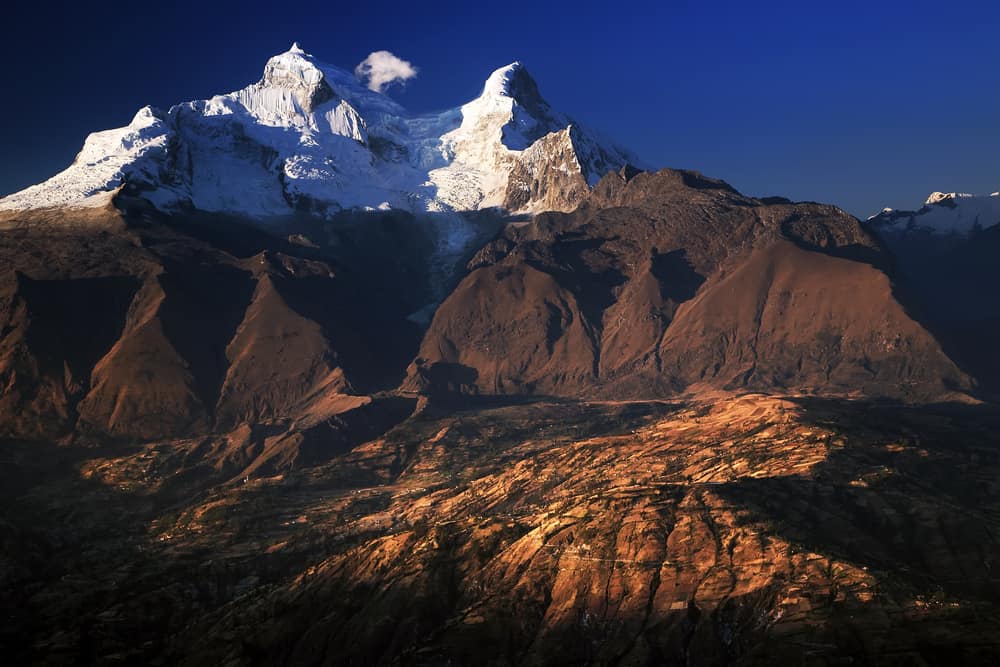
Huandoy is a mountain massif in the Cordillera Blanca of Peru. Huandoy consists of several twin summits, Huandoy Norte and Huandoy Sur, separated by a narrow ridge. The name “Huandoy” refers to a flower in the Quechua language.
Compared to Mount Kilimanjaro
Mount Kilimanjaro, standing at 19,341 feet (5,895 meters), is the tallest mountain in Africa.
While Kilimanjaro is an iconic mountain, its elevation falls short when compared to the towering peaks of the Andes in South America, which boast some of the highest summits in the world outside of the Himalayas. All 15 of tallest mountains in South America surpass Kilimanjaro in elevation.
However, unlike many of these peaks, Mount Kilimanjaro is a trekking mountain that requires no technical mountaineering skills. Therefore, people will little to no hiking experience and average physical fitness can summit Kilimanjaro. Our expert guides and a full support crew can lead you to the top.
Interested in climbing Kilimanjaro? See our trip dates and prices



















































